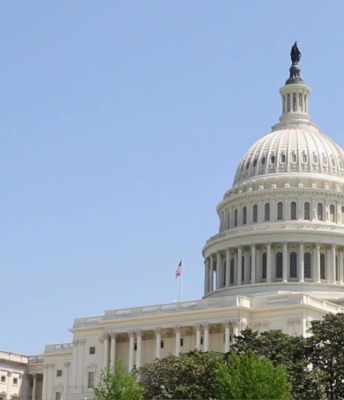If you earn overtime pay or receive tips as part of your compensation, there’s good news: a new federal law could help you keep more of that income.
As part of our commitment to keeping businesses and professionals informed about impactful tax legislation, DHJJ is closely tracking the One Big Beautiful Bill Act (OBBBA), particularly its provisions for Overtime and Tip Tax Relief. These temporary deductions, effective from 2025 through 2028, are designed to increase take-home pay for eligible workers by reducing federal taxable income on certain types of compensation.
In this article, we’ll explain how the new deductions work, who qualifies, and what steps you should take now to prepare. Whether you’re an employer updating payroll systems or a worker looking to plan ahead.
Overview of the New Law: The One Big Beautiful Bill Act (OBBBA)
The One Big Beautiful Bill Act (OBBBA), signed into law on July 4, 2025, includes two major provisions aimed at helping working Americans. The goal of the No Tax on Overtime and No Tax on Tips provisions is to increase take-home pay and to encourage people to work extra overtime shifts and in industries where employees customarily and regularly receive tips. These temporary deductions are effective for tax years 2025 through 2028.
No Tax on Overtime Pay (Sort of): Who Qualifies and How It Works
The OBBBA allows workers to deduct the premium portion of their overtime pay from their federal taxable income. The premium portion of overtime means the excess of the regular rate (the time-and-a-half part). The Fair Labor Standards Act of 1938 requires that most nonexempt employees must receive overtime pay for any hours worked beyond 40 in a single work week. This applies to both W-2 employees and independent contractors (1099 workers), with the qualified overtime pay required to be separately stated on the year-end tax document that they receive. Overtime compensation does not include qualified tips; tips eligible for a deduction must meet the criteria under the No Tax on Tips provision.
How the Overtime Deduction Works
This deduction is “above-the-line,” meaning you can claim it even if you take the standard deduction versus itemizing your deductions on Schedule A. However, there is a limit on how much you can deduct per year of $12,500 if your filing status is single or $25,000 if your filing status is married filing jointly. If your adjusted gross income (AGI) is over $150,000 (single) or $300,000 (married), the deduction starts to phase out. Married taxpayers must file a joint return to claim the deduction; if they elect to file married filing separately, neither spouse will be allowed to take the deduction. This isn’t completely tax-free; this only reduces your federal income tax. You’ll still owe Social Security and Medicare taxes on the full overtime amount.
Example: Calculating the Deductible Overtime Amount
For example, if your normal wage is $20/hour, and you work overtime at $30/hour, you can deduct the $10/hour difference for each hour of overtime up to the cap based on your filing status.
What Workers Should Do Now
Individuals should keep good records of their overtime hours and pay to ensure that the tax forms (W-2 and 1099-NEC) received are accurate so they can claim the deduction when filing. It is anticipated that the Treasury Department and IRS will provide additional guidance identifying which workers who are not treated as employees will qualify for the No Tax on Overtime Pay Provision. Beginning in 2026, the income tax withholding procedures are required to be modified to account for the qualified overtime pay deduction.
No Tax on Tips (Kind of): New Deduction for Tipped Workers
Under the OBBBA, eligible workers can deduct up to $25,000 of qualified tips from their federal taxable income each year. For self-employed individuals, the deduction cannot exceed the net income of the trade of business in which the tips were earned. The deduction applies to jobs in the service industry (restaurant servers, bartenders, hotel staff, delivery drivers, salon workers, and more). The IRS must publish a list of eligible occupations that were customarily and regularly receiving tips on or before December 31, 2024, by October 2, 2025. Employees whose employer or self-employed individuals whose trade or business is considered a Specified Trade or Business (SSTB) for Section 199A deduction purposes are not eligible for the No Tax on Tips Provision. SSTB includes the fields of health, law, accounting, performing arts, consulting, and athletics.
How the Tip Deduction Works
The deduction is only available for cash tips, which include tips paid by cash, check, debit, or credit card. To be eligible, the tips must be disclosed on your W-2, 1099-NEC, 1099-K, or self-reported on Form 4137. The deduction is considered “above-the-line,” meaning you can claim it even if you don’t itemize deductions. Like the overtime deduction, this benefit begins to phase out if your adjusted gross income (AGI) exceeds $150,000 if your filing status is single or $300,000 if your filing status is married filing jointly. Married taxpayers must file a joint return to claim the deduction; if they elect to file married filing separately, neither spouse will be allowed to take the deduction. This isn’t completely tax free, as you will still pay Social Security and Medicare taxes on the tip income just like regular wages.
Tracking Tip Income to Maximize the Deduction
Individuals should track tips received, especially if they are not processed through their employer’s payroll system, to ensure accurate reporting and deduction claims.
Final Thoughts on Overtime and Tip Tax Deductions Under the 2025 Tax Law
As new tax legislation continues to evolve, understanding how provisions like the Overtime and Tip Tax Relief work can help individuals and businesses make more informed financial decisions. These deductions don’t eliminate taxes entirely, but they do offer meaningful opportunities to reduce federal taxable income for those who qualify.
Whether you’re an employer planning ahead or a worker tracking your income, it’s important to stay current on the eligibility criteria, phaseout thresholds, and documentation requirements outlined in this law.
Next, we recommend reviewing our breakdown of other key components of the One Big Beautiful Bill Act (OBBBA) to understand how this legislation may impact your broader tax strategy for 2025 and beyond.
At DHJJ, we’re committed to keeping our clients and communities informed on the financial implications of new laws, so you’re always prepared, never surprised.





